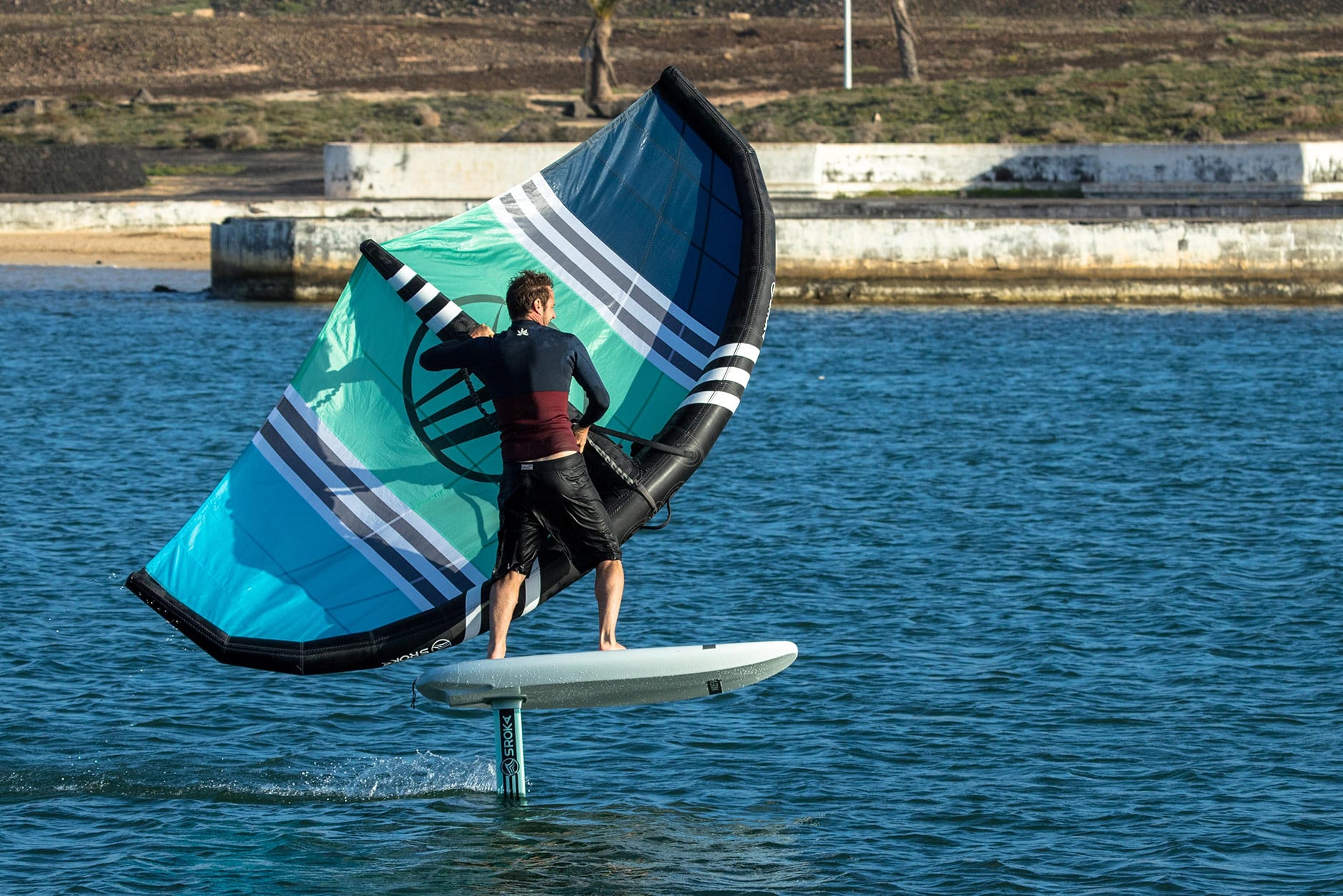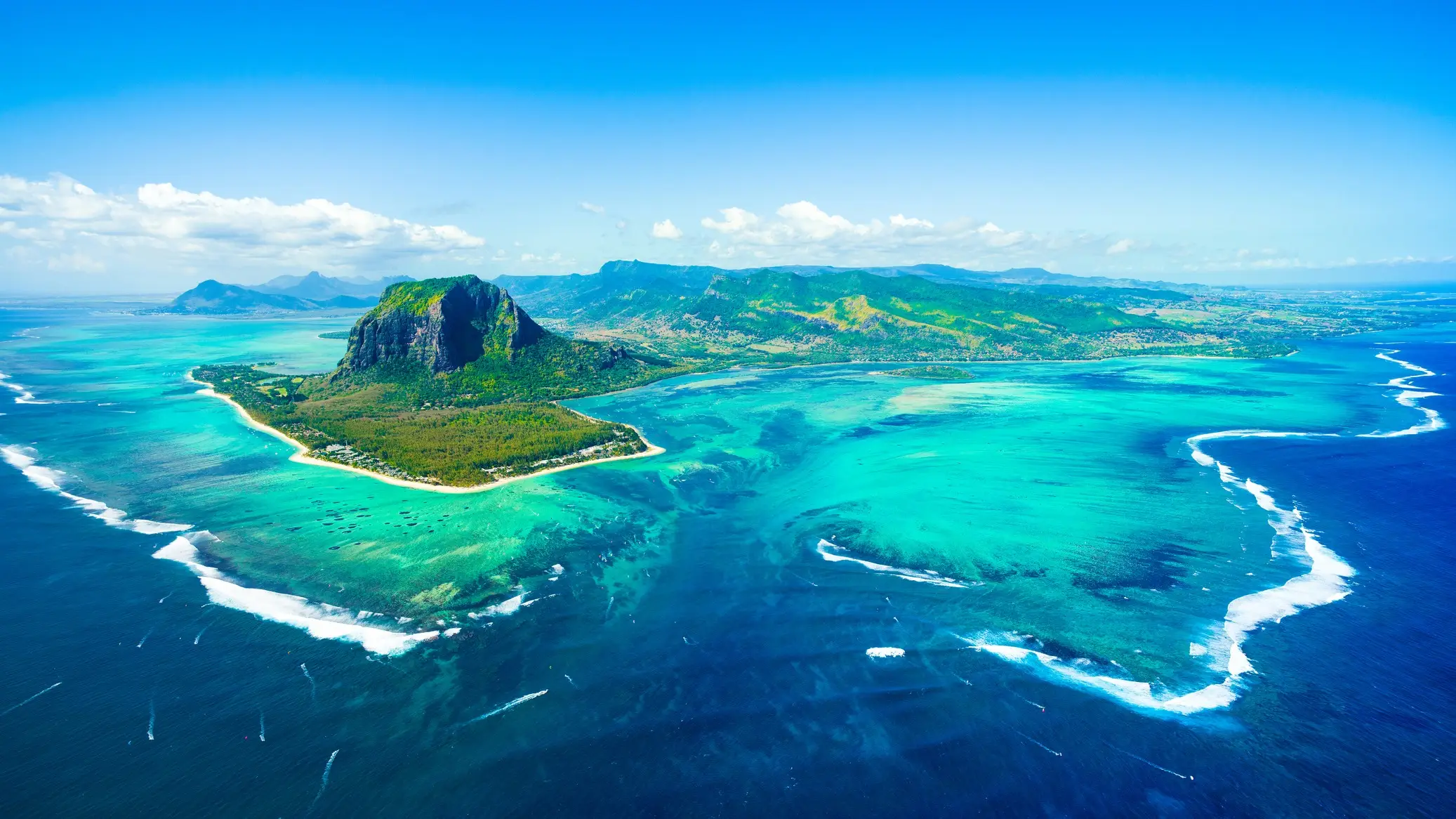Andalusia, a sunny region in the south of Spain, is a true paradise for water sports enthusiasts, especially wing foil. With its vast and diverse …
How to go faster in wingfoil?
Going fast in a wingfoil brings incredible sensations. It’s like flying over water. The foil reduces drag and therefore increases speed with less effort.
To go fast, it is not enough to reduce the surface area of the foil to accelerate. You have to learn to sail fast, you have to adjust your foil (at the level of the stabilizer and position of the foil on the board), you have to find the right position and press the foil correctly to go fast. Acquiring this skill requires learning. It involves learning to surpass ourselves, to explore our own limits, to evolve at the limits of our abilities, and to soar high above the water and sail oversail.
We will accompany you to progress and learn to go fast… Faster and faster. Combining fluidity and a feeling of freedom. Wing foiling opens the door to new horizons, merging flight and gliding, and sparks the quest for speed.
So let’s talk about the different tips together in order to go faster and faster in Wing foil.
What is the maximum speed in Wingfoil?
The speed record in Wingfoil is 37.89 knots, or 70.17 km/h over one second. All while being one meter above the water. To reach these speeds, the rider used a kite foil for the Olympics with a very small front fin area (around 500 cm2).
The choice of spot: a crucial importance to go fast.
Not all spots lend themselves to going fast. So you have to choose your spot carefully according to what you want to do. Sailing on a flat body of water, if possible without current, with a steady wind is fundamental to go fast. The “type” Leucate spots in offshore wind or relatively closed body of water are to be recommended because the body of water even with a very strong wind will remain flat.
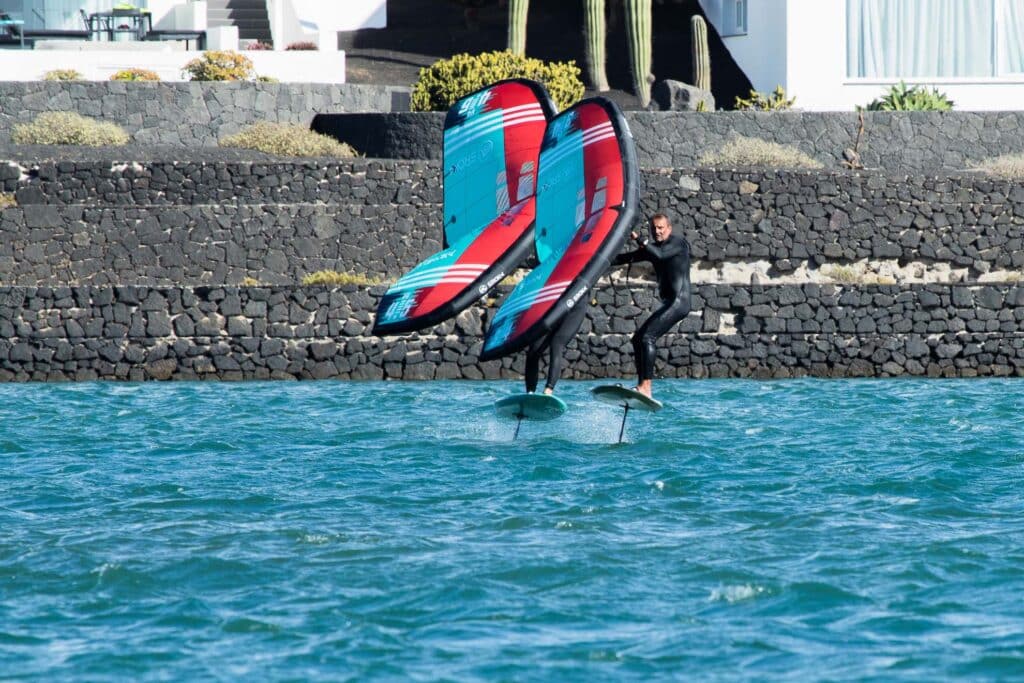
1. The choice of the wing
The wingfoil wing is your engine, it is the one that will generate the necessary propulsion to go faster. It is therefore important to choose a kite that is adapted to the conditions as well as to your size. Typically, a fast wing has a thinner leading edge with stiffer materials like dynema or alulla. In addition, to go fast, reducing the size of the wing will optimize the speed. Indeed, even if there is 800 times more drag in the water than in the air, a big leading edge or too much wing area will slow you down. It’s difficult to go at 30 knots with a 7 m2.
The smaller wings decrease drag and therefore provide better acceleration to the rider. They are ideal in strong wind conditions and offer better air penetration. The rigidity of the wing will be the order of the day in your quest for speed. It will provide a stable profile at high speeds and in strong winds. Sails with ultra-thin attack edges such as the wing wing V4 SROKA Elite in Dynema will offer you unparalleled penetration in the area as well as a rock-solid profile rigidity.
Finally, a wing with a hard grip will be more effective than a wing with a soft grip. This will bring stiffness, high-speed control and allow you to be the fastest on the spot.
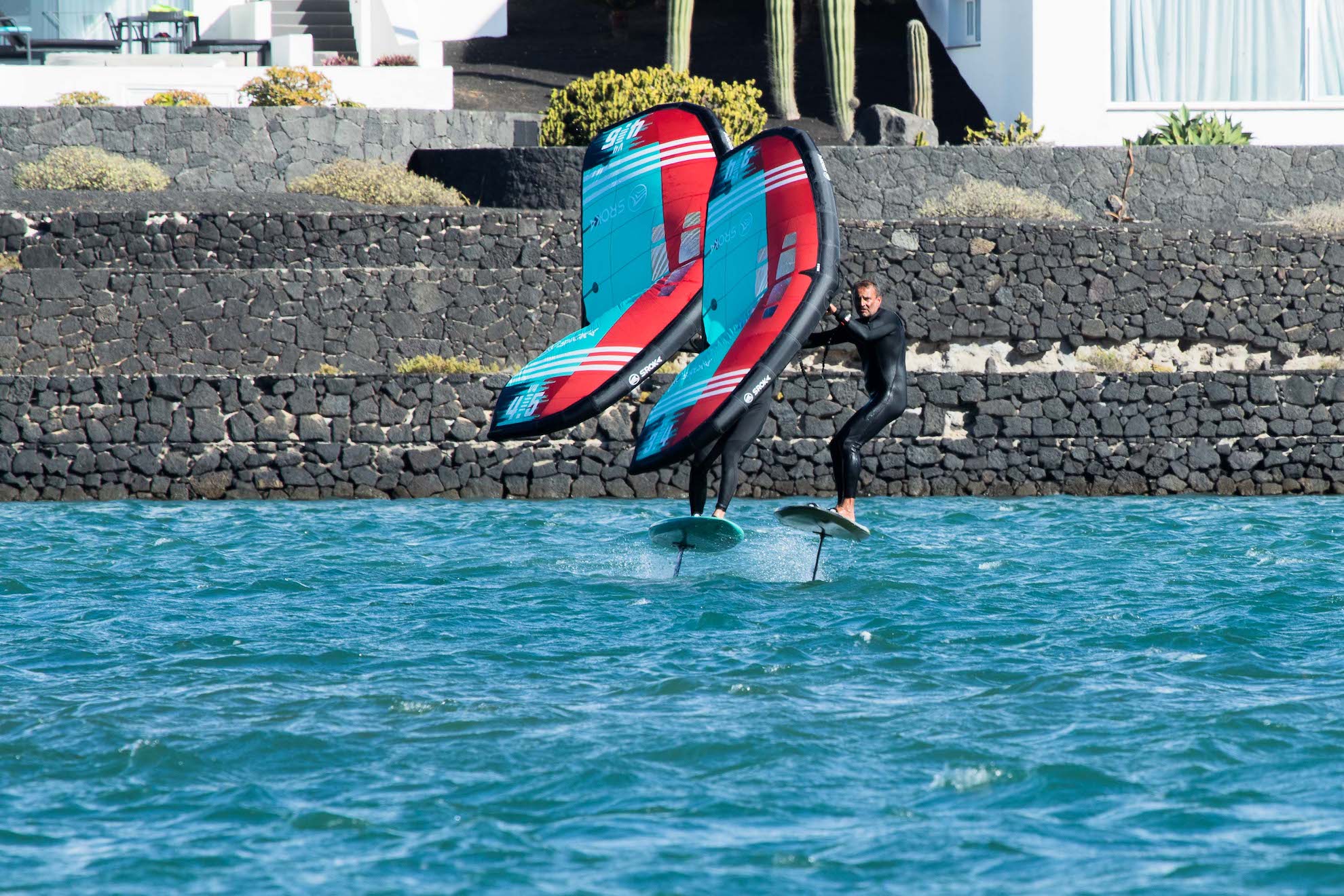

2. The choice of board.
A wing foil board that goes fast should not be too wide. It is recommended to opt for a board that is narrower and has a little length to optimize your start to the schedule with a small foil. A narrower board will allow you to counter-heel without the rails coming into contact with the water. The construction of the board is fundamental to increase performance. It is therefore preferable to opt for a full carbon sandwich board to maximize stiffness and responsiveness. The Superfly or LW range will be perfect for this program.
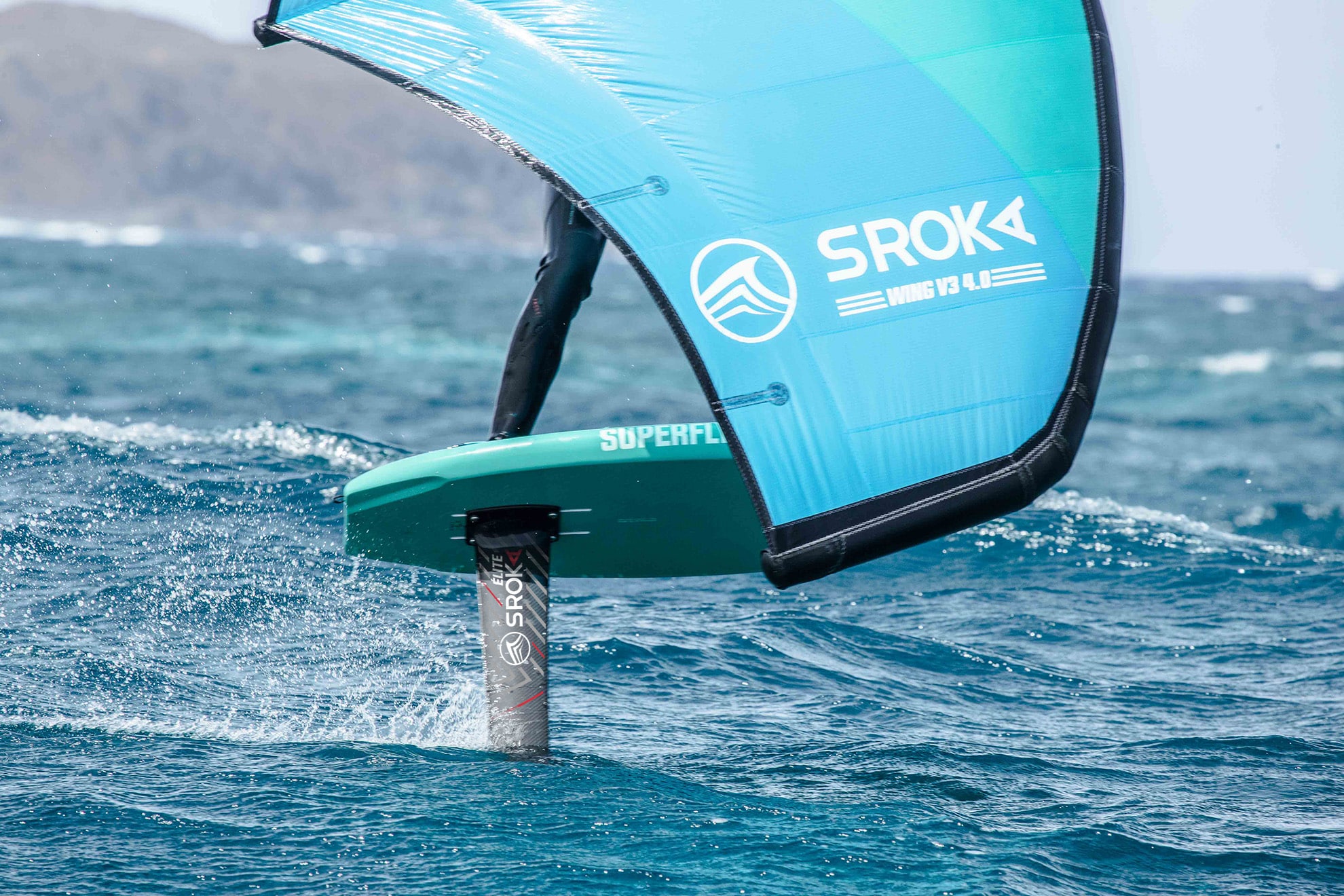
3. The choice of foil
The foil is the key element to go faster. As we mentioned earlier, there is 800 times more drag in water than in air. The foil therefore has a major impact, it is the one that is in contact with the water. There are two types of foil; The aluminum foil can reach speeds of 25-26 knots (46 km/h). And the carbon foils, which, if they are thin, can exceed 30 knots.
The Elite SROKA carbon foil (14 mm) will allow you to exceed 26 knots with its 14mm thickness and a small kite. Its stiffness will give you better control as well as a better feel of the foil under your feet. If you want to increase your speed, we advise you to upgrade to a 670 S HA or 810 S HA fin.
It’s not enough to have the right equipment. You have to adjust your equipment. To go fast, you have to be stable. If you’re unbalanced in the longitudinal axis, you’ll never be able to go fast. To do this, we recommend using adjustment wedges for the stabilizer.
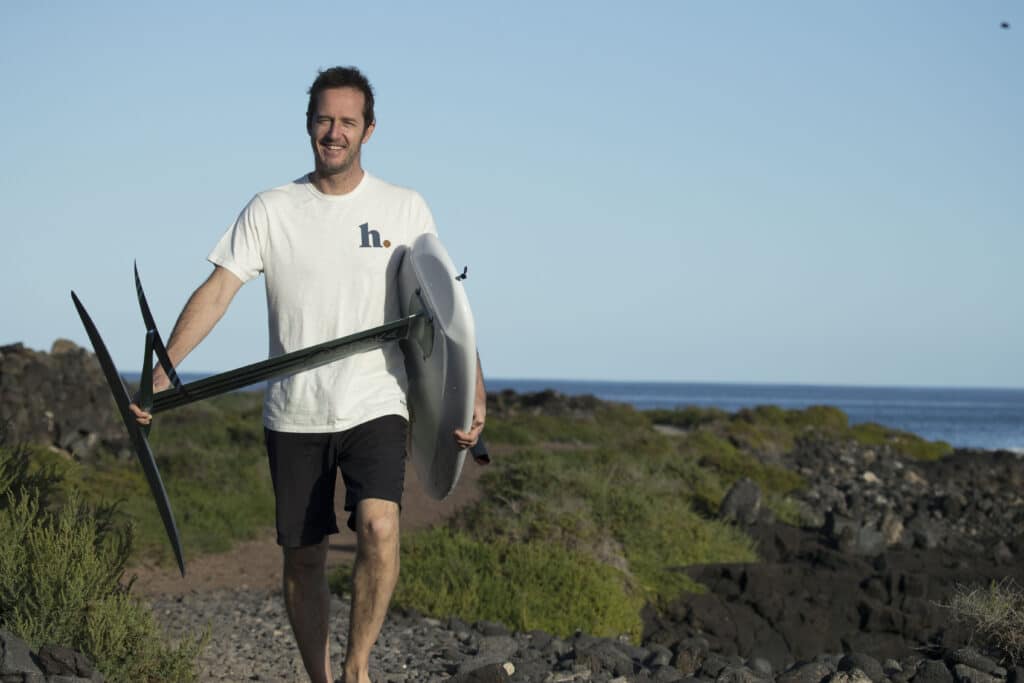
Tips by Bruno SROKA
- Personally, to go fast, I put a little stabilizer back on, i.e., I increase the angle of the stabilizer with the help of a positive angle wedge (over-elevation on the back of the wedge. For my 80 kg, I use a +0.75° wedge (0.25° + 0.50°)
- I push the foil back into the US rails
- And I move the straps all the way forward.
- My quiver to go fast: 670 S HA, Elite Carbon Mast, Stabilizer 180. Superfly 5’2.
4. Positioning on the board
It is crucial to adopt a wide stanza to guarantee total control of your board at high speeds. You also have the option of using footstraps. They will allow you to have better control of your board and thus increase your speed.
5. Pressure of the feet on the board.
Foot pressure plays a major role in gaining speed. Indeed, it is important to have the pressure mainly on the front leg. It allows for better balance of the board as well as better control by reducing the risk of stalling, which would lead to a loss of speed. Tilting its weight forward also promotes a smoother glide and keeps the foil at an ideal flight height for better speed and reduced drag.
6. Body Position
By tilting your body slightly forward, while keeping your shoulders low and your back straight, you promote air penetration and therefore a smoother glide. Keep your arms slightly bent to better react to changes in wind strength. It also helps to promote your pleasure and your sailing time by reducing muscle fatigue.
7. The Counter-Heel
Counter-heeling is a sailing technique that consists of putting your weight towards the wind when sailing, which has the effect of tilting the board and the foil is thus accelerating the foil. To do this, you have to sail with the sail down and shift your weight towards the wind (so no longer on your heels) without lofering (going upwind) or downwind (going downwind). This will have the effect with the inclination of the foil to increase the pressure on the front leg and thus increase the speed.
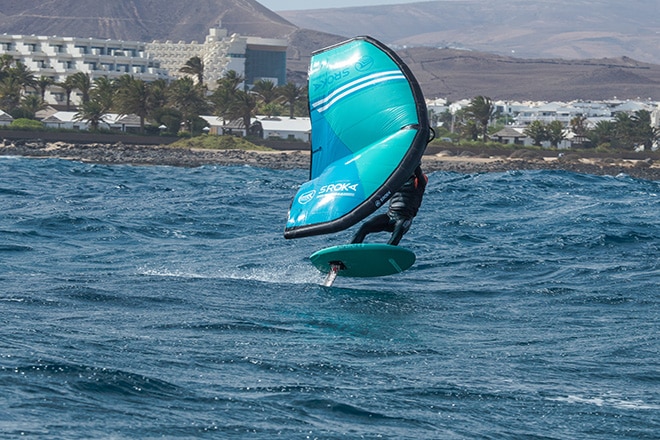
8. Wing Positioning
It is important to sail with the sail low without touching the water while pushing the sail forward to optimize the efficiency of the sail’s propulsion. Keep the sail stable, this will allow you to promote constant acceleration and speed on the water.
9. Weight & Balance Management
To sail fast, it is important to have a stable flight with the wing down while having the weight rather on the front. In order to have better control of the flight while navigating. It is also always necessary to analyze the water body in order to predict wind rises and falls as well as the condition of the water body. Don’t be surprised by the speed. To do this, it is important to learn how to navigate fast by going step by step.
In summary, it is important to remember that to go fast that going fast in Wing Foil is not learned overnight.
You have to start by getting used to sailing fast and with small front wings. The choice of equipment is essential to push your speed to the next level. Opt for a narrow board with length to optimize the start on the plan, a wing with a thin leading edge with a rigid profile to have better wind penetration and a foil such as the Elite SROKA 14mm carbon with a front wing such as the SROKA 670 S HA or the SROKA 820 S HA.
Go fast, don’t be decreed. You have to learn to push those boundaries. Experience and training will be fundamental to beating your records. Finally, it’s easier to try to push your limits with others than alone in your corner. So motivate each other, and try to be better than your colleague.
Article you may be interested in
The 360 wing foil is a maneuver that allows you to start freestyle flat on the water. This trick, which involves making a complete turn …
Mauritius, known for its white sandy beaches and crystal clear waters, is a dream destination for water sports enthusiasts. Among the popular activities that attract …
Wingfoiling is an emerging water sport that is gaining popularity due to its high accessibility. Whether you are young or old, wingfoiling is an activity …


